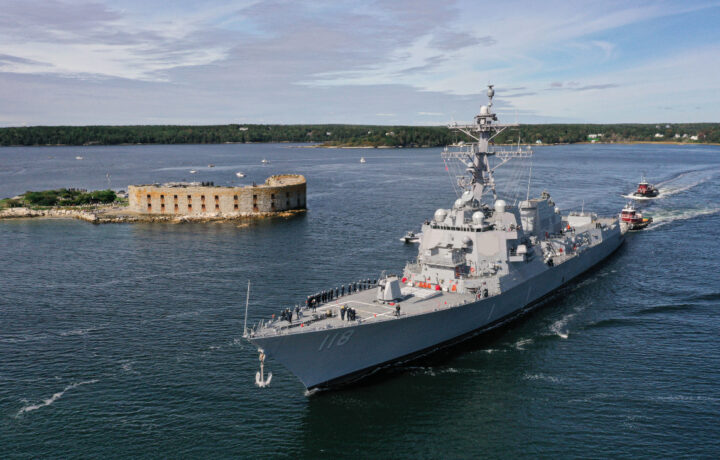The United States Navy warned earlier this year that the lack of shipyard capacity is putting “unsustainable strain” on its ability to build and maintain its fleet. As a result, the U.S. Navy continues to struggle to deliver ships on time and on budget. However, it was able to avert a potential strike at Maine’s Bath Iron Works – as the facility approved a three-year contract.
Just last week, Machinists Union Local S6 approved a labor pact with 76% of members backing the deal in online voting, and a union spokesperson said the contract negotiations went “smoothly” overall. That was a far cry from three years ago when the union went on strike for 63 days.
Bath Iron Works, which is located on the Kennebec River in Bath, ME, has been a subsidiary of General Dynamics since 1995. It was founded in 1884, and currently employs 6,700 workers.
Pay Raise for the Workers
The contract, which took effect last Monday, raised worker pay a range of 2.6% to 9.6% in the first year with differences due to a mid-contract wage adjustment that already took effect for some workers, and will be followed by a 5% increase in the second year and a 4% increase in the third. In addition, workers will receive an increase in contributions to their national pension plan while health insurance costs will grow.
Machinists Union Local S6, which represents about 4,200 production workers, heralded it as the biggest pay rises by percentage since the union’s founding in the 1950s, Defense News reported.
“Local S6 would like to thank you for your vote and support as we continue to advocate for our members’ best interests and uphold the contract with the utmost dedication,” union leaders with Local S6 said in a post to social media.
Bath Iron Work was quick to note its support for the deal
“This agreement represents our desire to continue working together to deliver the Navy’s ships on time to protect our nation and our families,” the company said in a statement. “We appreciate our employees’ participation in the process. Training and implementation of the new elements of the contract begin this week.”
No Repeat of the 2020 Strike
It isn’t just the union workers that likely breathed a sigh of relief. The United States Navy could have faced a shutdown at the facility, which is just one of two shipyards that build the service’s Arleigh Burke-class destroyers.
The 2020 strike – which involved 4,300 members of the International Association of Machinists and Aerospace Workers – began on June 22 and only ended on August 23 with the approval of a new labor contract. Work had already been disrupted by the COVID-19 pandemic, and under previous management, the yard pushed to bring in subcontractors to get back on track.
That move, which shook up seniority rules, was unpopular among the unionized workforce.
At the time of the strike, Bath Iron Works was already behind schedule by about six months and the walkout served to set back work by an additional 60 days. That resulted in Bath Iron Works losing contract volume, as competitor Huntington Ingalls recently received orders for six hulls in the latest round of Arleigh-Burke-class block buys; while the Maine shipyard received just three.
The higher wages will ensure that the current employees remain on the job, and could help Bath Iron Works more competitive in a very tight hiring market. The shipyard currently faces dozens of unfilled positions for shipfitters, pipefitters, electricians, machinists, painters and other front-line roles.




